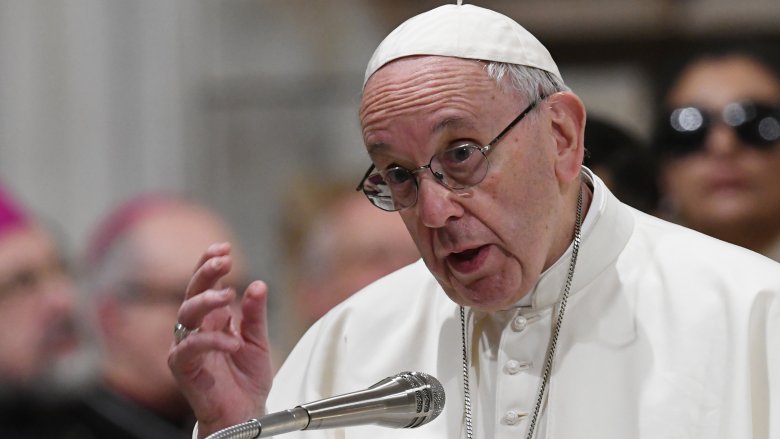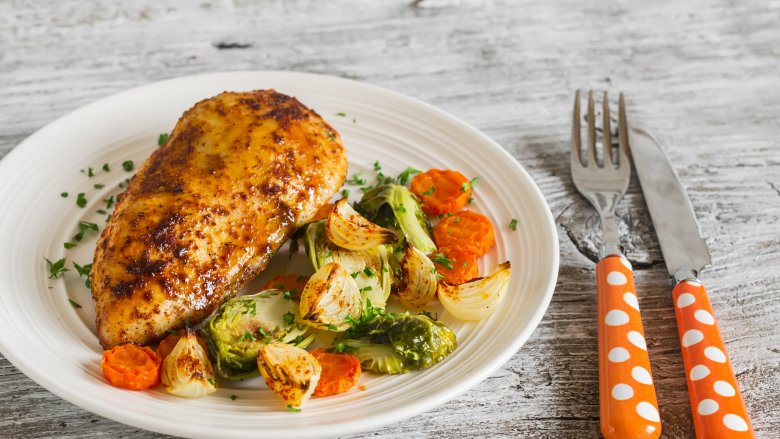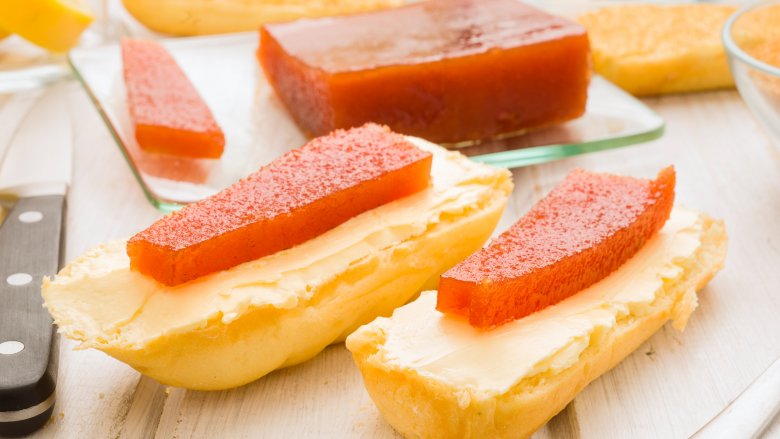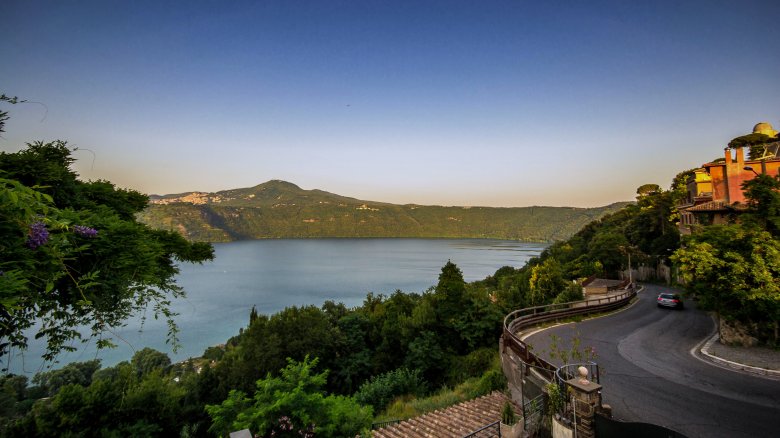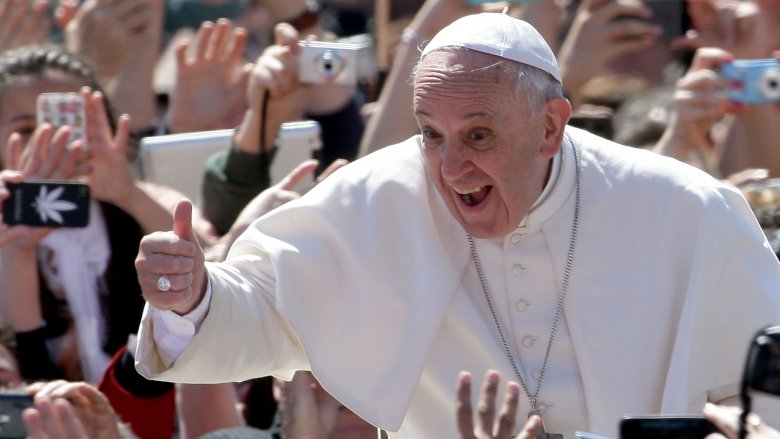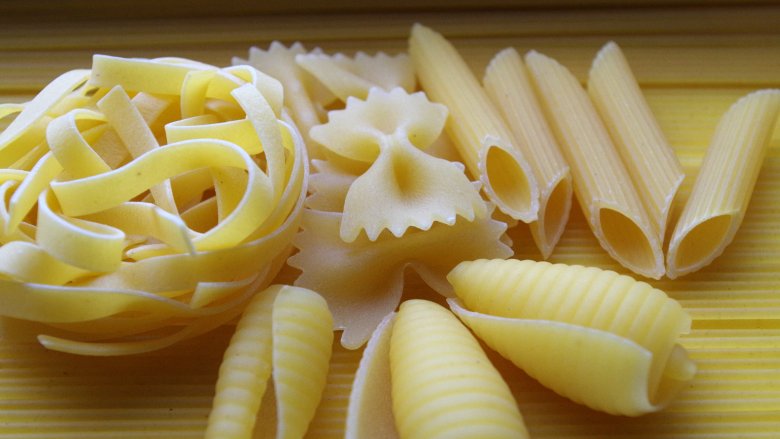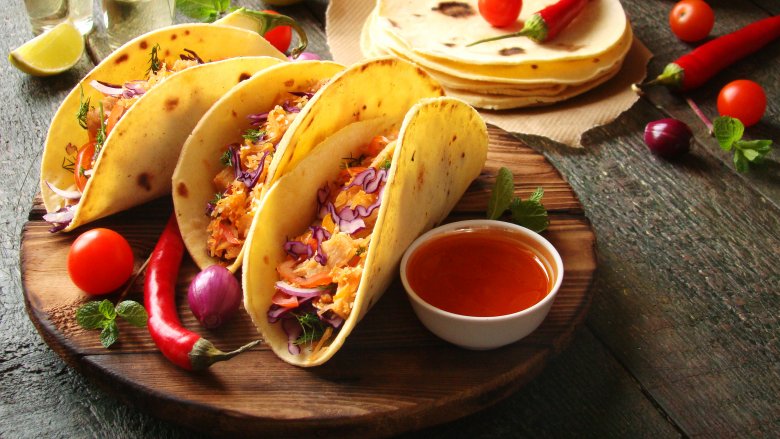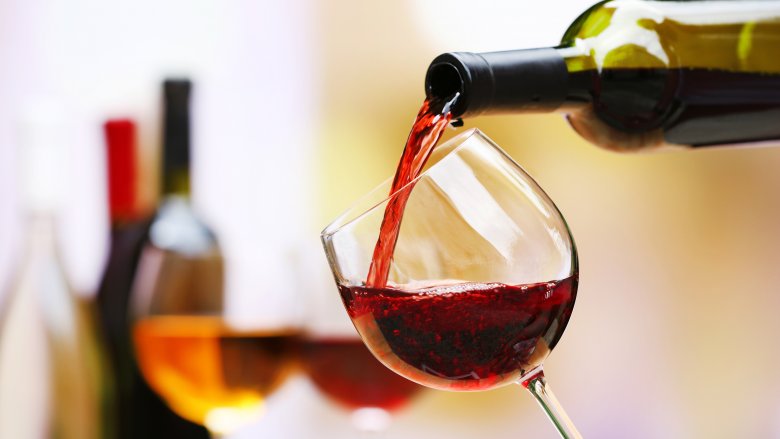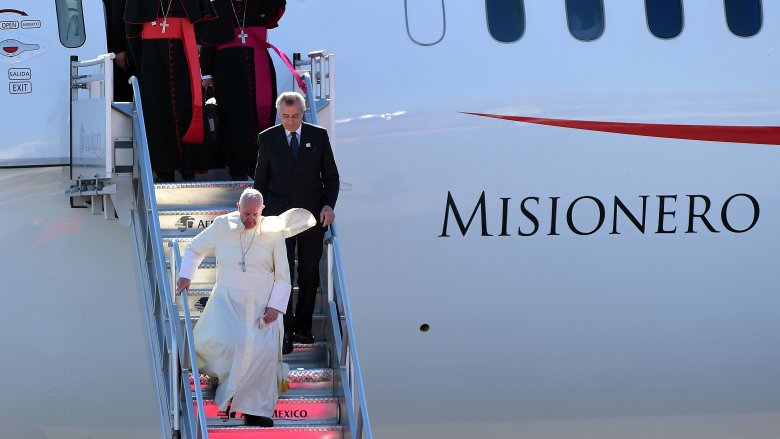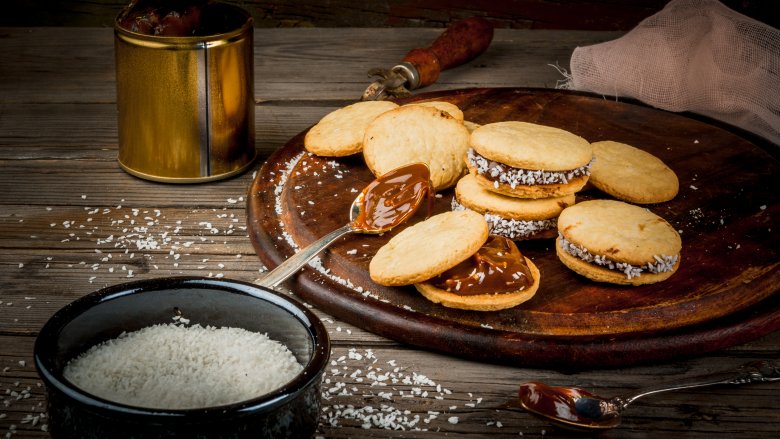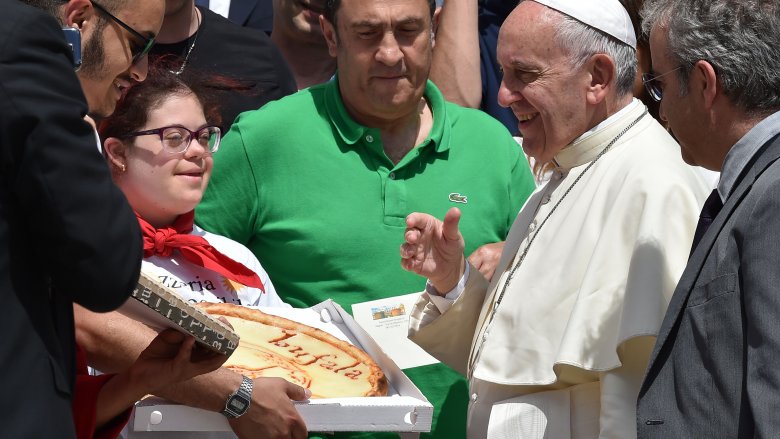This Is What Pope Francis Ate
The late Pope Francis was a simple man, as befits a Christian leader. But of course, he was also one of the most important and famous figures on the planet. Historically, popes often enjoy this fact, leading lavish lives — sometimes to the point of infamy. He navigated this paradoxical position with grace, largely eschewing the luxury at his disposal and humbly choosing to live in a Vatican guesthouse rather than the plush papal apartments. His diet followed suit: It tended to include many foods enjoyed by the masses, rather than the elite. So, what did he eat?
Pope Francis kept his meals on the austere side — sometimes, anyway. At other times, he did eat some of Italy's finest foods, and, as befitting a pope for the 21st century, he even just enjoyed a pizza now and again. We've got the full scoop on his daily diet, favorite foods, and even what he wasn't allowed to eat.
He kept it simple
By and large, Pope Francis did have a fairly modest diet, especially compared to some of his predecessors. Boniface VIII, for example, ate everything off solid-gold tableware, while Clement VI literally put the "Pape" in Chateauneuf-du-Pape. Francis, however, was a simpler man. He refused to wear some of the role's more lavish garments, preferred a simple car to a limousine (a vintage 1984 Renault 4, to be exact), and didn't mess around with ridiculous headwear.
This simplicity, naturally, extended to his eating habits, according to USA Today. He rarely, if ever, stopped by the two Roman restaurants usually frequented by cardinals and bishops, and his first dinner with the College of Cardinals after his selection to the papacy was a simple pasta dish. Usual dinners might have been made up of baked chicken with salad, fruit and a glass of wine. The pope may have been a lot of things, but one thing he was not is gastronomically extravagant — in any way, shape, or form.
Breakfasts were light
Pope Francis' daily routine was about as strenuous as you might expect. He woke up at 4:30 a.m., prayed for two hours, meditated, and prepared his morning homily. After mass, Francis did a meet-and-greet with some of his followers before breakfast. His breakfasts were pretty much in keeping with his diet — he'd have freshly-squeezed orange juice and something called membrillo.
Membrillo, for the uninitiated, is a sort of gelatinous pasta that's made out of quince and is highly popular in Argentina, where Francis grew up. It's made by reducing quince pieces to a purée, adding sugar and lemon juice, then cooking until it's thick and dark. It's not exactly the most popular or extravagant dish you'll find (certainly not in Italy), but if it was good enough for Pope Francis, it's good enough for you.
Everything was made with the finest ingredients
So, Pope Francis may not have hosted lavish banquets every day, or feasted throughout the nights, but his simple diet was, at least, sustained by a fine range of seasonal ingredients and vegetables. In keeping with his writing in "Laudato si'," Pope Francis' second encyclical, where he states that the fight against injustice and inequality begins with the land, water, agriculture and food, the produce used in the pope's meals were fresh and home-grown.
Well, "home-grown" might be an exaggeration. In fact, they were grown at the Castel Gandolfo, a vast summer residence for incumbent popes which includes a palace, 74 acres of garden and 62 acres of farmland that's used to grow vegetables, raise crops, and rear animals. Francis, being largely unaccustomed to holidays, might have given up his private use of the Castel Gandolfo and opened it to the public, but it would seem that his kitchens still used what's grown on the land.
Sometimes he just showed up in the staff canteen
The way dishes were prepared in the Vatican's kitchens followed a similar ideology to the approach of Pope Francis in "Laudato si'." Foods that are God-given are utilized first and foremost. This means that things like cheese, cream, and butter — foods of the Earth, if you will — are treated with reverence by the nuns who work in the kitchens. This may have been one of the reasons why Pope Francis was a big fan of ice cream specialties.
Equally, polenta (boiled cornmeal), gnocchi, and pastas also featured frequently on the papal menu. The latter of those, in fact, appeared so frequently that it caused a bit of a ruckus in papal politics over recent years.
On occasion, according to the Washington Post, Pope Francis himself wandered down into the Vatican staff canteen to have lunch with the city-state's staff members. On times like those, he might have something along the lines of pasta, or cod and grilled tomatoes ... although Francis, unlike the other employees, tended to get his meals for free.
He was not allowed much pasta
Vatican City, of course, is in Italy, and eating in Italy means one thing: pasta. Lots and lots of pasta. So it's probably as unsurprising as it would be devastating to find out that you're eating too much of it. That, sadly, was the revelation Pope Francis had to face when Vatican doctors insisted that he seriously cut down on his pasta intake if he wanted to stay healthy, according to the Huffington Post.
He had a few health scares — putting on weight, suffering from back problems, not to mention missing a part of his lung — but this instruction (which came with a supplementary instruction to exercise more) must have been the one that stung the most. Just how successful Francis was in cutting out pasta from his diet isn't quite certain, but we'd be tempted to guess that it didn't exactly disappear entirely.
And he was not allowed many other foods, too
It's not just pasta that was cut out of Pope Francis' diet. There were a few other things that were usually left off the papal menu. According to News.com.au, Joe Ibarra, a Mexican chef who cooked for the pope during a visit to Mexico, Francis was basically forbidden from eating anything too spicy or greasy, and all fruits had to be seedless to aid digestion, while even his water was imported from the Vatican, since it had a low sodium content.
Ibarra also revealed that eating times were strict for the papal party (breakfast takes 15 minutes, lunch takes 40 to 50 minutes and dinner would last only an hour) due to the pope's busy schedule. That didn't stop Francis, however, from taking some time to visit the kitchens that would be cooking for him and thanking the chefs who fed him.
Pope Francis appreciated wine
A pope without wine is like king without a kingdom. It's important stuff — not only from a cultural perspective, the Vatican being in Italy and all, but also from an ecclesiastical standpoint. Wine is vital to Catholicism as a whole, which is why one of Jesus' most regularly retold miracles is his act of turning water into wine.
So of course, wine was a big part of his diet. Not only in taking communion, which, of course, is a pretty big deal for the pope, but beyond that. According to the Catholic News Agency, Pope Francis actually elucidated how the water-into-wine thing demonstrates how wine is, and should be, the most crucial part of a wedding feast. In an apparent bid to be remembered as the coolest pope ever, Francis explained that "a wedding feast lacking wine embarrasses the newlyweds." Go ahead, then, and crack open a bottle.
Pope Francis dined out when traveling
Pope Francis was known to travel. Visits to other countries are no rarities for modern popes, and what Francis might have eaten on any particular day was dictated by exactly where he was. In 2015, according to Fortune, he visited New York City, where he visited Vivolo, an Italian restaurant on the Upper East Side run by Angelo Vivolo. According to Vivolo, there were a few restrictions to what could be served, and, surprisingly enough considering his support for the stuff, Francis passed on the wines that were offered to him.
When Francis arrived, he was accompanied by a contingent of Vatican secret service and Swiss guards, and dined with a dozen other people who had accompanied him from Rome. As is tradition, the pope was served first. Unsurprisingly, Francis took a moment of his time to visit Vivolo and his staff in the kitchens when he got the chance.
Pope Francis' favorite foods
He may have been God's chief representative on Earth, but Pope Francis was still human. Naturally, then, the pope had his own list of favorite foods — the stuff he really loved more than anything else.
On this list, you'll find mate — a kind of tea-like, caffeine-rich drink that's incredibly popular in South America, and which was regularly offered to him by adoring fans and followers. He enjoyed meat (more so than fish, though he'll refuse neither) and had a penchant for alfajores, another South American treat — two round cookies pressed onto sweet fillings, often covered in powdered sugar, grated coconut or chocolate. Another taste of home that Pope Francis enjoyed was Argentinean empanadas.
Francis wasn't a fussy eater, though, and would usually happily eat whatever was served up in front of him. Perhaps in a testament to this, there weren't really any foods or dishes out there that are particularly known to have been disliked by him — only those ones he was not actually allowed to eat.
Naturally, Pope Francis loved pizza
Time and time again, Pope Francis demonstrated his love of pizza. He once celebrated his birthday with a 13-foot pizza, and even enjoyed one delivered straight to the Popemobile. Perhaps the most poignant indication of his love for that most classic of Neapolitan dishes, however, came in a broadcast interview in Mexico, back in 2015 (via USA Today). In a wide-spanning discussion, in which he touched on papal retirement, death and injustice, Francis explained that, despite largely enjoying his time as pope, the one thing he would want is "to go out one day, without being recognized, and go to a pizzeria for a pizza."
Being pope can only be an incredible experience — to travel so far, meet so many people, and sit at the top of one of the world's oldest and richest institutions. However, it says a lot about the humility of Pope Francis that he wanted more than anything else in the world to go out and get a slice of pizza without anyone causing a fuss.
